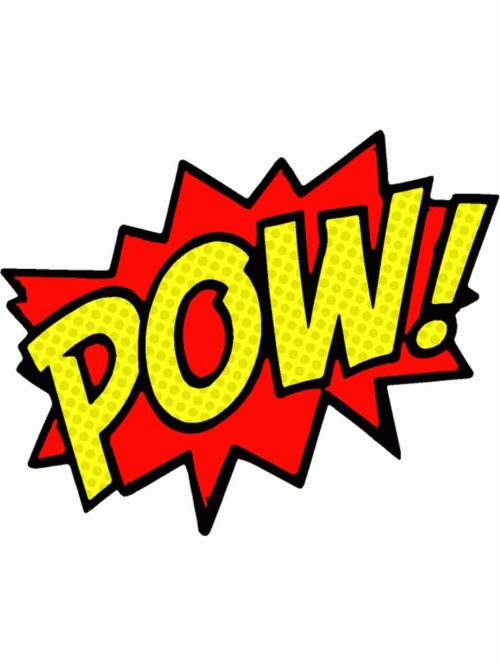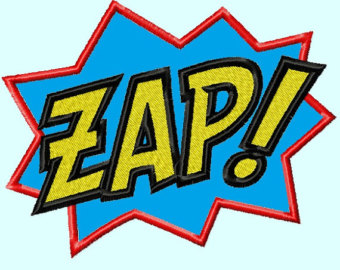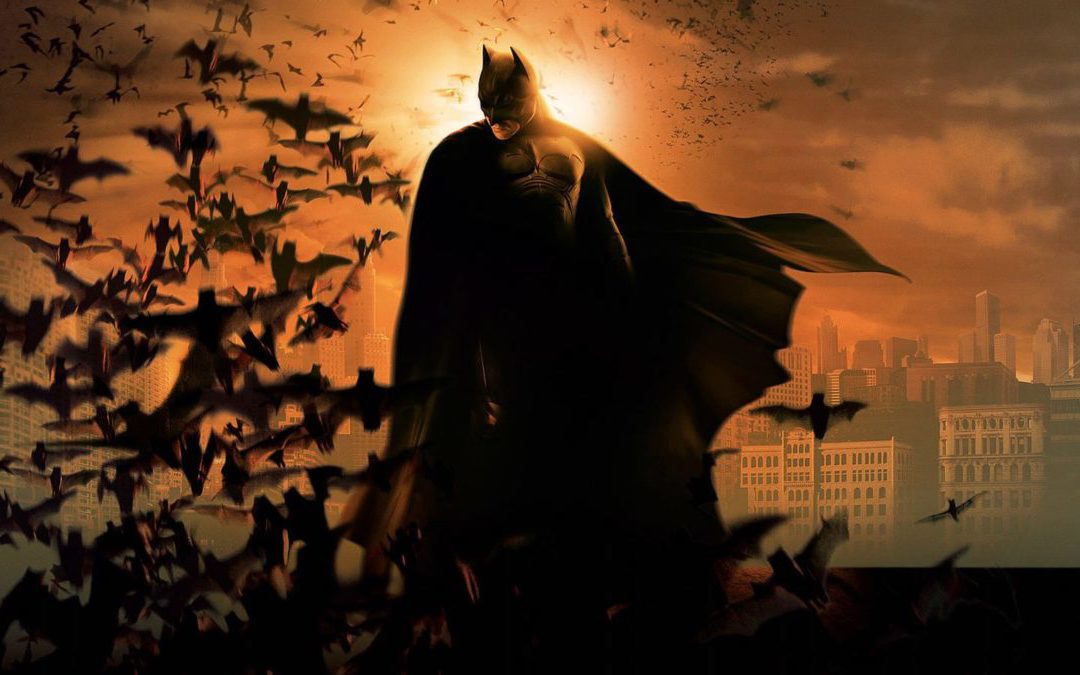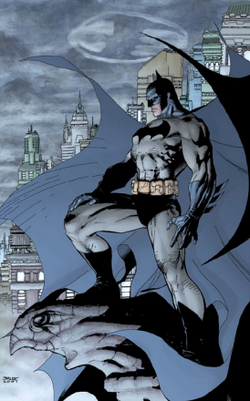By Steve Kayser
When you were a little boy or girl you had this dream, you were going to change the world, restore honor, restore dignity. Remember? Did you follow your dream?
Michael Uslan did – and earned $2.6 billion dollars along the way. I had the wonderful opportunity (and great fun) of interviewing Michael. For those of you that don’t know the name, Michael Uslan, he was the executive producer of films such as Batman, Batman Returns, Batman Forever, Batman & Robin, Constantine, The Spirit, Batman Begins, and the second highest grossing film of all time, The Dark Knight. As a producer, he is one of the highest-grossing movie producers of all time, with The Dark Knight alone having already passed the $1 billion mark.
The Boy That Loved Batman

But the real story behind the rise of Batman and the Dark Knight is a Horatio Alger-type tale. And it all started when an 8-year-old boy got mad at the dissing of Batman and vowed to avenge his honor. Michael tells the story in his book “The Boy Who Loved Batman,” a true story of how a comic-obsessed kid conquered Hollywood to bring The Dark Knight to the silver screen. And along the way, a Cincinnati love story places a critical part, without which, the Dark Knight may have never risen.
Steve Kayser: Michael, your book is exceptional. It’s an inspirational tale of how one person (you) armed only with a burning desire to restore dignity to your childhood hero, Batman, conquered Hollywood. Can you talk about the moment – the Bruce Wayne moment – that changed your life forever?
Michael Uslan: Yes, you know it’s funny when those moments strike. I guess I have to explain what a “Bruce Wayne” moment is. For those of you out there who might be Batman fanatics or comic book nerds as I was, young Bruce Wayne, at about age 12, saw his parents murdered before his own eyes. At that moment, he sacrificed his childhood and swore that he would get the guy who did it. Swore he’d also get all bad guys. He made a commitment that he would honor for the rest of his life, even though he had to walk through hell for the rest of his life to do so.
The Dissing of Batman
Well, my Bruce Wayne moment came on a cold night in January 1966. My parents were safe upstairs in the kitchen, and I was downstairs in the den watching the debut of the Batman TV show. I was simultaneously thrilled and horrified by what I saw on TV. I mean I was thrilled that it was the first TV series since George Reeves’ Adventures of Superman, about a superhero. It was in color, the car was cool, but I was horrified that the whole world was laughing at Batman.
POW, ZAP, WHAM
That just killed me. I made my little vow that somehow, someday, someway, I would show the world what the true Batman, the 1939 creature of the night, stalking criminals in the shadows, was really like.
And that somehow I would erase from the collective consciousness of the world culture those three little words: pow, zap, and wham.


Steve Kayser: Uh-Oh. I love those words. I knew that when I heard those words, someone was going to get a butt-whipping. Robin was going to get in trouble. Then he’d say, “Holy crap.” Then Batman would save him.
And the world would be alright.
Michael Uslan: It was a superhero version of Tourette Syndrome that Robin had.
Steve Kayser: Haha, funny. What I liked about that is, down deep you realize that Batman has one thing that none of the other superheroes had. He was a normal guy in extraordinary circumstances, very much like Joseph Campbell’s archetypal monomyth described in the book, “The Hero’s Journey.” His parents were killed, was thrown into a life journey to avenge a mighty wrong. You were like that too, but you started that night in 1966.
What got you through all those years until you got to college before you started on your grand journey?
Michael Uslan: Well, I was the ultimate comic book fanboy. I collected, read and devoured comics. My mom said I learned to read from comics before I was 4. By the time I graduated high school, I had a collection of over 30,000 comic books dating back to 1936.
My poor dad, when we moved into our house, never once got his car in the garage. But he supported my interest in reading and built wall-to-wall-to-floor-to-ceiling shelves for my comic book collection. And as soon as I filled the shelves up, we sold the entire floor of the garage. So that defined me.
And I was lucky. I grew up in the ’50s and ‘60s. In the mid-‘50s, there was an attack on comic books. A psychiatrist claimed that comic books were the reason for the post-WorldWar II rise in juvenile delinquency and that any kid who read a comic book would become a juvenile delinquent if not worse. Many of my friends’ parents burned their collections, would not allow them to bring comics into the house.
So I was lucky because my mom said if I promised to read books, newspapers, and magazines as well as my comics and kept them neat, I could keep them. That was the best deal I ever had in my life.
So really, in going forward with a goal in life, to have supportive parents, great teachers, and to have ultimately a supportive wife is incredible.
Steve Kayser: You weren’t the product of a billionaire’s son – you worked your way up, knocked down doors and along the way you even got bloody knuckles from pursuing your passion. It was a long road. Years of rejection. You even had one Hollywood producer say that it was the ‘worst idea they ever heard of in their life, creating a movie out of Batman.’
What was your worst rejection, how did you overcome it, and what sustained you?
First – Quit Your “Job”
Michael Uslan: Well, to set the stage, I actually acquired the rights to Batman in 1979 with my partner. I quit my job and went to Hollywood, even though I didn’t come from money and I couldn’t buy my way into Hollywood. I didn’t know anyone in Hollywood. I had no relatives in Hollywood. I thought with Batman in my back pocket I could convince them that dark and serious Batman movies, the way he was originally created, would be something that the world had never seen before and would be tremendously successful.
Batman as a Movie – HaHa – Are You Crazy?
I was shocked when every single studio in Hollywood turned me down. I was repeatedly told I was crazy. It was the worst idea they ever heard, and the rejections just piled up. It was,
“Michael you are nuts. You can’t do serious comic book movies.”
“Michael, you are out of your mind. You can’t do dark superheroes.”
“Michael for God’s sake, nobody has ever made a movie based on some old television series.”
I had a closet full of rejection slips. One of my favorite rejections was from Columbia Pictures, when after pitching my heart out for the dark and serious Batman, the head of production said,
“Michael, come on, you are crazy. Batman will never succeed as a movie because our movie “Annie” didn’t do well.”
Are you talking about that little red-headed girl who sings Tomorrow?
Yes.
Well, what does that have to do with Batman?”
“Oh come on Michael, they are both out of the funny pages.”
And that was my rejection from Columbia.
Steve Kayser: What was it about Batman that drew you in so much that it turned into your life’s pursuit?
The Greatest Super-Power … Humanity
Michael Uslan: At age 8, when you are consuming every comic book you can get your hands, it’s magical. These comic books truly are today’s modern day mythology. It carries on from the ancient gods of Greece, Rome and Egypt except for today they are all in spandex and capes. And when you find a superhero who has no superpowers, his greatest superpower is his humanity. Somebody who is not a guy who slugs his way out of a fight with a pow, zap, and a wham, but it’s a guy who typically out thinks his opponent.
At age 8, I did believe in my heart of hearts that if I worked out really hard if I studied real hard, if my dad bought me a cool car, I could become this guy.
In addition to that, you had the primal origin story of Batman that cuts across borders, demographics, and even cultures. You also have the other important elements that give any superhero his popularity and longevity, and that is great supervillains. Batman simply had the best.
Steve Kayser: In retrospect, it all sounds easy. A great idea. Great story. A no-brainer. But it wasn’t, was it?
Michael Uslan: No. Let me go back a bit. I was eight years old when I decided my goal in life would be to write Batman comics. That came true for me when I was in college at Indiana University in Bloomington. And you know what? I panicked because then my dream as a little kid had come true. I needed a new dream, what was it going to be? And it took me 10 minutes to think back on that day in 1966 and say, okay my next dream in life is going to bring a dark and serious Batman to the big screen.
But then comes the real challenge … how do you do that? Remember – I was in Indiana.
Well, I had been mentored into DC Comics through a man who became the President there, a wonderful man named Sol Harrison. He brought me to DC when I was in college at Indiana. And when he heard what I wanted to do, he put his arm around me, very fatherly, and said,
“Michael, please save your money, don’t do this. Since Batman went off the air on television, he is as dead as a dodo. Nobody is interested in Batman anymore.”
And I said, “Yes, but Sol if we do it in this new dark and serious way like nobody has ever seen before, we can do it.” He said, “Is there any way I can talk you out of this?” I said, “No.” And he said, “All right, come on in.”
Do You Believe?
It took us six months of negotiation before my partner and I were able to buy the rights, scrounge up money from people we knew, from dentists, doctors, lawyers, relatives, whatever we could find and get the rights to Batman.
Steve Kayser: So for the next TEN YEARS you busted your butt. Against staggering odds. I would say almost overwhelming odds. Did you ever just say, “Ahh, I might not make it?”
Michael Uslan: Not really. I just kept on plugging. You know, at the bottom of it all it tests your mettle. When life turns into a 10-year long human endurance contest and everyone is telling you,“you are crazy,” “you stink, your ideas are terrible,” you really have to look deep inside and say, ‘Okay, am I just being stubborn or do I really absolutely believe in myself and my work?’
The key thing is you have to have support behind you. I married a girl I met the first day of my freshman year at college. She wasn’t even unpacked when we went out for the first time. And she knew what she was dealing with right up front with a kid who at that point was 18 years old, still reading and collecting comic books, that wanted to make comic books his livelihood Batman. And, by the way, she was a Cincinnati girl.
Steve Kayser: There you have it folks — The Dark Knight Rises because of Cincinnati girls. Wait a minute. That’ didn’t sound quite right.
Cincinnati Saves the Dark Knight!
Michael Uslan: I think I know what you mean. But, as a result, we have spent just so much time over the years in Cincinnati. Her whole family is based in Cincinnati. Her dad founded the Cincinnati Eye Institute, and he became my guardian angel. If I have a minute, I’d like to tell that story.
Steve Kayser: Of course, take more than a minute. It has to be an amazing story because I don’t think any girl I dated in Cincinnati would ever protect me if I told her Batman was going to be my livelihood. Their first response would typically be a knock upside the head.
Michael Uslan: Well, it was at a time where my back was against the wall, the years were going by, I still couldn’t get the dark and serious Batman movie up and running , Finally, I ran out of money, didn’t know where to turn next, or what was going to be. And my father-in-law, Dr. Morris Osher from Cincinnati flew out. The wisest man I’ve ever known. He sat me down and here’s our conversation,
“Okay, you went to law school so you would have something to fall back on. You now have a new house and a mortgage. You now have a baby. You have got to support your family and you can’t think of yourself as having failed. It was a great struggle and trying is really worth everything.”
“Yes, but I am so frustrated, I am so close.”
“Well, how close are you?”Don’t tell me, to getting a signed contract or deal, but to having a check in your hand for six figures.”
“Five months.”
“You are sure?”
“I think in five months I will have a check like that.”
“All right, I am going to pay all your bills for the next five months and at 6 o’clock p.m. from this day, five months from now, if you don’t have that in your hands, you will then accept the fact that you need to go back, be a lawyer and support your family?”
Steve Kayser: Can I have his phone number?
Michael Uslan: Ha-ha. Well, I couldn’t thank him enough. I spent the next five months working probably 20 hours a day, seven days a week. Everyone in Hollywood knew about the deadline I was facing and then they took advantage of it, because the last day, sometime between noon and 3 o’clock, a FedEx truck pulled up with signed contracts and a check for six figures.
I was able to pay back my father-in-law and have enough money to get us to the start of Batman.
Steve Kayser: If Joseph Campbell were still alive he’d use your story as an additional monomyth for the “Hero With A Thousand Faces.” The part where the wise sage steps in and helps the struggling hero. I suspect Mr. Campbell would find true symbolic meaning in the fact that the wise man was also a man of vision — an eye doctor. And I’m pretty sure it would be unique – I know of no other myths memorialized in Cincinnati. Well, except maybe the 1975 Big Red Machine.
But all of this still boiled down to you and your passion.
Michael Uslan: That’s so true. What it all comes down to, if you have a burning passion in your life, whatever it is – you have to pursue it. Make it come alive. Make it real. I learned this from my dad. My dad was a Mason. He worked six days a week his entire life, from age 16 into his 80s. No matter what the weather was, he got up before dawn, a big smile on his face, couldn’t wait to get to work because he was an old world artist, a craftsman who loved what he did with brick, stone, and marble. He loved building beautiful fireplaces, homes, and walls. When you grow up in a house with someone like that, how can you not want that for yourself? How can you not want to wake up on a rainy Monday morning and say I can’t wait to get to work?
Well, my brother and I went to work for my dad in the summers, and it was awful.
But this was our foundation. It was still awful. I realized I had to figure out what my “bricks and stones” were. For me it was comic books, Batman and movies gave me my passion. Then my mother taught my brother and I an important lesson in growing up and it was very simple in our house. Once you make a commitment, you stick to it, period, end of the story, no excuses, you stick to it. If I didn’t like Little League, too bad, I had made a commitment to my teammates, and I would see it through, and that’s just the way it was.
So to have that degree where you will commit, where you will stick to it, where you will knock on those doors, and I am telling you, I never had so many doors slam in my face. And I realized early on when that happens; I only had two choices: I could go home and cry about it, or I could pick myself up, dust myself off, go back and knock again and knock again and not get frustrated. And when I speak of colleges today, the students say to me, “well, what about timing and what about luck?”
Make Your Own Luck
And I say, “well, the magic of this whole thing is there is no such thing because it’s all about knocking on doors. That’s how you eventually make your timing. That’s how you eventually make your luck. And I don’t think there is any other way around it. It’s not an easy process. It’s not a short process, but I have proven you can make your dreams come true if you are willing to do this.
Steve Kayser: When you realized that you had finally done it, cut the deal, and you were assembling a team, what was it like?
Michael Uslan: Humbling. Can you imagine how lucky a person can be in a career spanning 35 years where you can say I have been involved in projects with three geniuses. And, in the 1989 Batman, there were two of them: Tim Burton is a genius; Anton Furst, our production designer and my dear friend who designed the whole look of Gotham City and the Batmobile. His work and Tim’s work still have an influence on every comic book and genre movie done even today. You can still feel it. You can still sense it.
It was revolutionary in 1989 because there had never been a dark and serious comic book superhero movie before. And, it was Tim’s genius that said a few things.
Number one: To get an audience to suspend its disbelief for a serious superhero, they had to from the opening frames of the film, believe in Gotham City. It had to be a place they could believe was real, had its own rules, and it’s own universe. They were very successful in creating that.
Number two: To me back then, the only actor who could play the Joker was Jack Nicolson. The day he was hired, it was one of the greatest days of my career because to me, at that time, in the comic book world of black versus white, good versus evil, this was the real clown prince of crime as had been portrayed in those comic books.
Another Bruce Wayne Moment
The other thing that Tim Burton realized that no one else did was that the audiences had to believe in Bruce Wayne. This was more about Bruce Wayne than Batman, and that’s why he felt he needed Michael Keaton to play the role, somebody so that an audience would not unintentionally laugh when they see an actor getting dressed up in a bat costume in a serious movie, but someone they could say,
“Oh my god, there is a guy so obsessed, so driven to the point of being psychotic that he would get dressed up in a costume like that and do it.”
And Tim was absolutely right. That’s one of the main reasons that movie worked and it set the stage for what was to come with all different kinds of comic book based films.
Steve Kayser: What did you think about the pick of Michael Keaton as Batman?
Michael Uslan: I was apoplectic when he first said, “Michael Keaton is Batman.” I said, “Oh my God.” Eight years of my life trying to bring a dark and serious Batman to the screen and now I had in my mind, I was picturing the posters,
“Mr. Mom is Batman.”
I almost fell apart.
But it was all under this vision that Tim had and his ability to execute.
Steve Kayser: When you saw the first couple of cuts, was there any trepidation? Were you worried or nervous?
Michael Uslan: No, I believed in this from day one.
When everyone was telling me no; when everyone told me it was the worst idea they ever heard, I never faltered in my belief.
I always knew it would be tremendously successful. And I guess my big epiphany in life came when the movie debuted and broke almost every box office record and started to impact culture worldwide. It was so huge in 1989.
Steve Kayser: Did you do a shimmy-shimmy-shake victory dance when you realized you had shown all the naysayers wrong?
Michael Uslan: Well, it was a great feeling. I got a call from the guy ten years ago who was one of the studio heads who had just virtually thrown me out of his office; he thought it was such a terrible idea. And the phone rings, and he says,
“Michael, I am just calling to congratulate you on the success of Batman. I always said you were a visionary.”
And then it was clear to me, if you don’t believe them when they tell you how bad you are and how awful your work is and if you don’t believe them when they start telling you how wonderful you are and how great all your ideas are and just believing yourself and your work, you will do fine in this life.
###
This article first appeared on SteveKayser.com’s “Writing Riffs.”
Steve Kayser is the author of “The Greatest Words You’ve Never Heard: True Stories of Triumph,” an award-winning writer, former radio host, public speaker and the Founder of Kayser Media – which specializes in PR, Marketing & Media Relations. His eclectic (some say bizarre) approach to PR, Marketing and Media Relations has been documented in a marketing best practices case study by MarketingSherpa, profiled as a “Purple Cow,” by author Seth Godin, and featured in the best-selling books, The New Rules of Marketing and PR by David Meerman Scott and “Tuned In: Uncover the Extraordinary Opportunities That Lead to Business Breakthroughs” by Craig Stull, Phil Myers, and David Meerman Scott.
In addition, Steve is the co-author of “Margins and Missions… Not Moonshots: Pathways to a Better U.S. Higher Education,” and was editor, designer, and producer of “The Surgeon and the Spirit: A Panoramic View of a Journey in Academic Medicine.”


